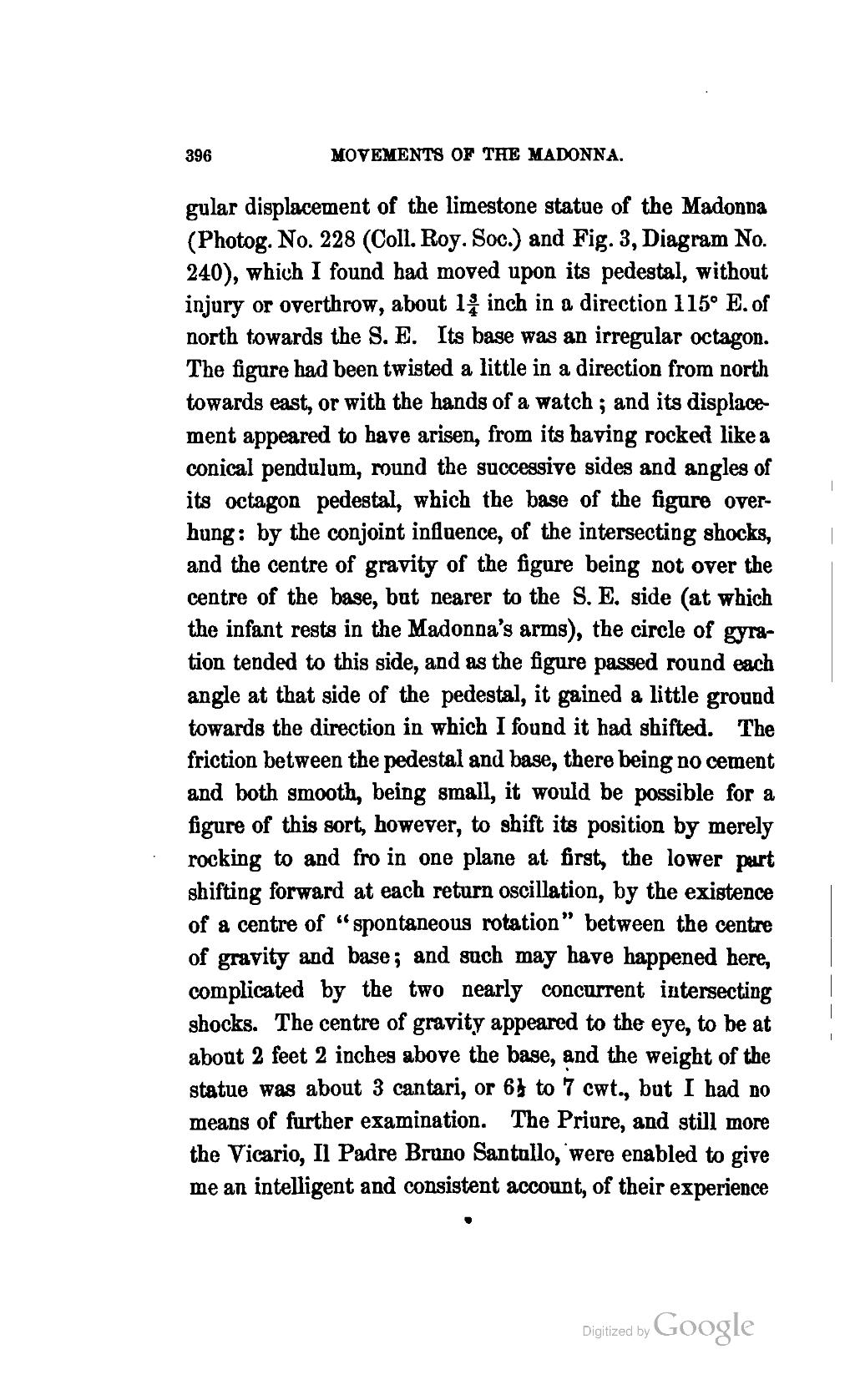gular displacement of the limestone statue of the Madonna (Photog. No. 228 (Coll. Roy. Soc.) and Fig. 3, Diagram No. 240), which I found had moved upon its pedestal, without injury or overthrow, about 134 inch in a direction 115° E. of north towards the S. E. Its base was an irregular octagon. The figure had been twisted a little in a direction from north towards east, or with the hands of a watch; and its displacement appeared to have arisen, from its having rocked like a conical pendulum, round the successive sides and angles of its octagon pedestal, which the base of the figure overhung: by the conjoint influence, of the intersecting shocks, and the centre of gravity of the figure being not over the centre of the base, but nearer to the S. E. side (at which the infant rests in the Madonna's arms), the circle of gyration tended to this side, and as the figure passed round each angle at that side of the pedestal, it gained a little ground towards the direction in which I found it had shifted. The friction between the pedestal and base, there being no cement and both smooth, being small, it would be possible for a figure of this sort, however, to shift its position by merely rocking to and fro in one plane at first, the lower part shifting forward at each return oscillation, by the existence of a centre of "spontaneous rotation" between the centre of gravity and base; and such may have happened here, complicated by the two nearly concurrent intersecting shocks. The centre of gravity appeared to the eye, to be at about 2 feet 2 inches above the base, and the weight of the statue was about 3 cantari, or 612 to 7 cwt., but I had no means of further examination. The Priure, and still more the Vicario, Il Padre Bruno Santullo, were enabled to give me an intelligent and consistent account, of their experience
